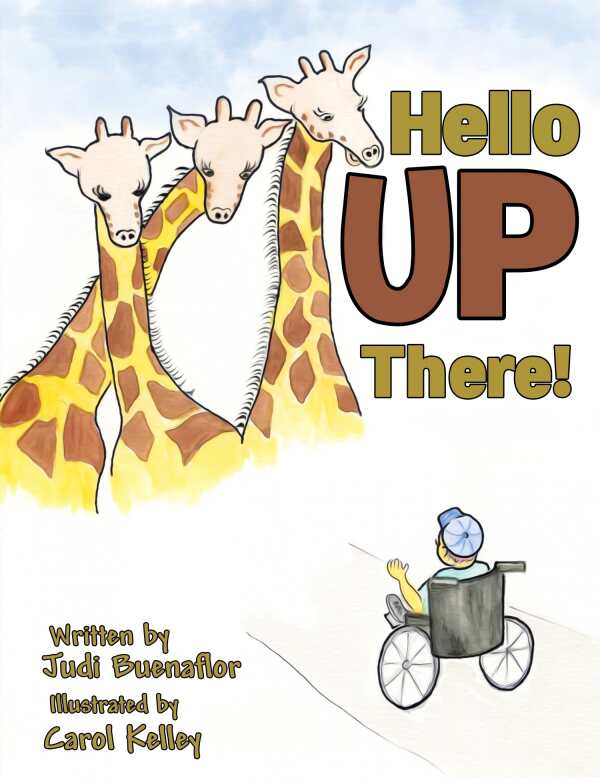Hello Up There!
Hello Up There! is an affirming picture book in which a physically disabled boy learns that he can’t be stopped from having rich life experiences.
In Judi Buenaflor’s warm picture book Hello Up There!, a friendly giraffe teaches a sad boy about the power of his imagination.
Of all the animals at the zoo, Jimmy is most excited to visit the giraffes. He longs to be able to see the world from their viewpoint—one that is not accessible to him, after an accident left him unable to walk. Still, Jimmy and a friendly giraffe engage in a conversation that leads to a major breakthrough in how he perceives himself. While acknowledging the benefits of being tall, the giraffe convinces Jimmy that there is another way to see: through his imagination.
Jimmy leans back in his chair, closes his eyes, and finds that he is able to visualize many of the animals at the zoo. The accompanying illustration depicts him with a contented smile on his face: he is seeing and hearing the singing birds and roaring lions. The giraffe affirms Jimmy’s visions, encouraging him to always “Let your imagination lift you up.”
Without bypassing the sadness that Jimmy’s accident brought into his life, the book mentions his family’s gratitude for his survival—and for what he can still do. Indeed, physical disabilities are discussed with respect throughout. Jimmy’s mother is a model of love: though she wants her son to see the other zoo animals, she grants his request to visit the giraffes first.
The watercolor illustrations are a pleasant complement to the story, but some of their figures and objects are too small and muted. Still, they balance with the text well, and the last illustration, depicting an affectionate farewell, is evocative. But the book’s erratic capitalization habits, and its repeated problems with printing the lowercase “f”, are distracting.
Hello Up There! is an affirming picture book in which a physically disabled boy learns that he can’t be stopped from having rich life experiences.
Reviewed by
Kristine Morris
Disclosure: This article is not an endorsement, but a review. The publisher of this book provided free copies of the book and paid a small fee to have their book reviewed by a professional reviewer. Foreword Reviews and Clarion Reviews make no guarantee that the publisher will receive a positive review. Foreword Magazine, Inc. is disclosing this in accordance with the Federal Trade Commission’s 16 CFR, Part 255.

